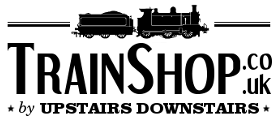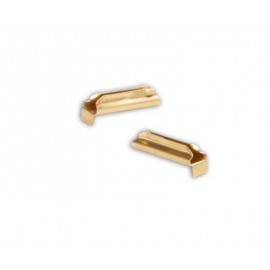Static grass and fine scatter are both commonly used in scale modelling and model railway projects to create...
No products
Product successfully added to your shopping cart
There are 0 items in your cart. There is 1 item in your cart.
Search Tips
Christmas and New Year
We are dispatching orders every weekday apart from Christmas Day, Boxing Day and New Year's Day.
If you order is time critical, select next day delivery at checkout.
The shop in Sandown is closed from 25th December, reopening on 30th December.
Is G gauge a credible option for an indoor layout ?
G Gauge, also known as garden gauge, is a popular choice for outdoor model railways due to its larger size and robust construction. It is more ornamental in nature when compared to other gauges, meaning that it is intended that the garden landscape becomes the layout and setting with the trains and track seamlessly bending in to the local environment. However, it can also be used for indoor layouts, depending on the available space and personal preferences.
One advantage of G gauge is its impressive size, which allows for highly detailed rolling stock and realistic scenery. This can be particularly appealing for those who enjoy creating intricate landscapes and settings. Additionally, G gauge trains tend to have more power and can pull heavier loads, adding to the realism of the layout.
However, there are some considerations to keep in mind when using G Gauge indoors. Firstly, the larger size of G gauge trains and tracks requires more space compared to smaller scales like OO/HO or N gauges. A major consideration will be whether there is enough space to accommodate the curves of a G gauge layout and the large space required to operate a G gauge train and its rake.
Secondly, G gauge trains may produce more noise and require more power to operate, which could be a concern in an indoor setting. It is important to consider the noise levels and power requirements when planning the layout and ensure that it is compatible with the indoor environment.
G gauge trains and accessories can be more expensive compared to smaller scales. The larger size and increased detail often come with a higher price tag. Additionally, as G gauge was intended for outside use it is more ornamental in purpose, with a corresponding lack of available accessories in scale when compared to other gauges.
In summary, G gauge can be a credible option for an indoor layout but it will require a considerable amount of available space to operate; plus the initial outlay costs for track and rolling stock will be substantial compared to other gauges. It offers the opportunity to create highly detailed and realistic scenes, but careful planning and consideration are necessary. Like so many aspects of layout design and operations, ultimately the key consideration comes down to the personal choice of the individual modeller.
Click here to receive the tips weekly in your mailbox. You can unsubscribe at any time.










